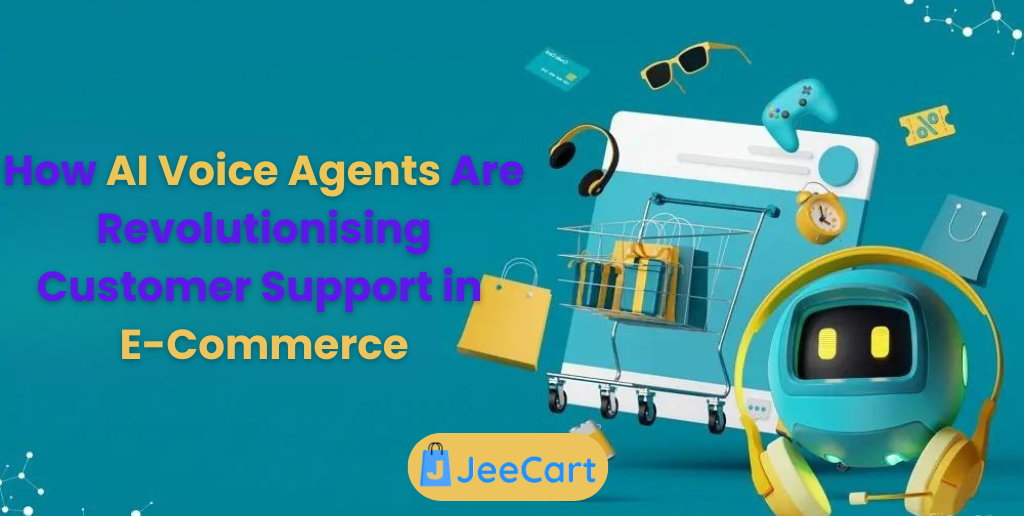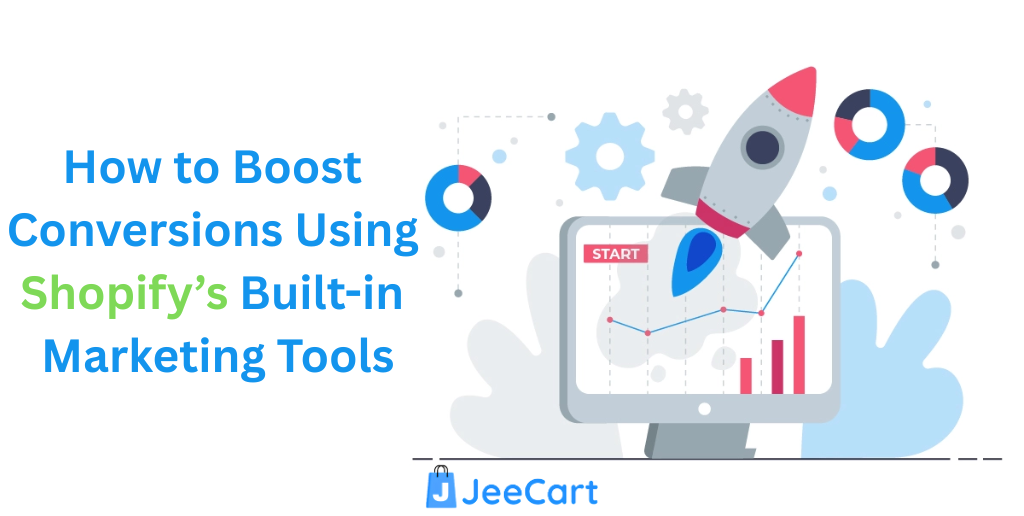Picture this—you’re in New York, ordering handmade jewelry from India, a gadget from China, and sneakers from a European brand, all with a few taps on your phone. That’s the power of global eCommerce!
Companies like Amazon, Alibaba, and Shopify have revolutionized the way we buy and sell, making international shopping easier than ever. Businesses of all sizes are now reaching customers worldwide, breaking barriers and creating endless opportunities.
But what’s driving this massive shift? And how can brands successfully expand beyond their home markets?
In this blog, we’re going to explore global eCommerce, its growth, challenges, and how businesses can win on a worldwide stage.
How to Set up an International E-commerce Strategy?
Here’s how you can successfully expand your e-commerce business internationally:
1. General Strategy
- Key Steps to Launch: Research your target markets, set up local payment options, handle logistics, and create a solid marketing plan. It’s about finding the right audience, making it easy for them to buy, and delivering efficiently.
- Market Research: Analyze demand, competition, and customer behavior. Use tools like Google Trends, surveys, and social media insights. Learn what sells and how people prefer to shop in global e-commerce markets.
- Biggest Challenges: Shipping costs, legal regulations, cultural differences, and payment methods are some of the crucial aspects. Solve these by partnering with local experts, offering multiple payment options, and using fulfillment centers.
2. Localization & Market Adaptation
- Why It’s Important: People trust brands that “speak their language.” Adapt your website, currency, and customer service to each market.
- Cultural Differences: What succeeds in one nation may fail in another. For instance, Japanese consumers appreciate comprehensive product descriptions, whereas Americans like summaries.
- Best Translation Practices: Employ native speakers, steer clear of machine translations, and adapt content, not only words but also tone and context.
3. Logistics & Fulfillment
- Shipping Options: Direct delivery, third-party logistics (3PL), or regional storage facilities. Select according to price, pace, and dependability.
- Customs & Tariffs: Every country has different rules. Research duties and taxes to avoid surprises.
- Handling Returns: Offer easy return policies with local return centers to build trust.
4. E-commerce Payment Gateway & Pricing
- Currency Exchange Impact: Prices vary in every country, so utilize dynamic pricing tools to remain competitive.
- Popular Payment Methods: Credit cards in the U.S., PayPal in Europe, and digital wallets in China. Provide popular payment gateway options for e-commerce.
- Preventing Fraud: Use fraud detection tools, address verification, and two-factor authentication.
5. Marketing & SEO
- Digital Marketing Strategies: Targeted ads, email campaigns, and region-specific promotions are the most efficient.
- Local SEO: Enhance local search engines, employ country-specific domains, and create content focused on specific locations.
- Social Media & Influencers: Collaborate with local influencers to build credibility and connect with your audience.
Expanding internationally isn’t simple, but with the correct tactics, it’s achievable!
Global E-commerce Growth and Statistics
Online shopping has gone from being a convenience to a necessity, reaching people in both urban hubs and remote areas. Increased internet access, smartphone adoption, and shifting consumer behavior are driving this transformation.
Let’s look at projected global eCommerce sales (in trillion USD) across top countries:
|
Ranking |
Country | 2021 | 2022 | 2023 | 2024 (Est.) | 2025 (Est.) |
|
1 |
China | 2.0 | 2.4 | 2.8 | 3.2 | 3.6 |
|
2 |
United States | 1.5 | 1.7 | 1.9 | 2.1 | 2.3 |
| 3 | United Kingdom | 0.6 | 0.7 | 0.8 | 0.9 |
1.0 |
| 4 | Japan | 0.5 | 0.55 | 0.6 | 0.65 |
0.7 |
| 5 | Germany | 0.4 | 0.45 | 0.5 | 0.55 |
0.6 |
Sources: statista.com, oberlo.com
How to Establish a Global E-commerce Platform?
Expanding an e-commerce business globally is an exciting challenge! It’s not just about selling products in different countries—it’s about creating an experience that feels local, personal, and seamless for every customer, no matter where they are. So, how do you do that? Let’s break it down.
-
Local Seller Empowerment:
In addition to working with international logistics firms, it is crucial to enable local sellers to connect with a wider audience.
This can be achieved by supplying resources and tools for small businesses to readily showcase their products, present local offers, and utilize AI suggestions, which may assist them in expanding globally.
-
Sustainability and Ethical Practices:
Worldwide e-commerce has a considerable effect on the environment.
Your platform could stand out by integrating sustainability into its core, like offering eco-conscious shipping options, partnering with brands that prioritize ethical production methods, or providing carbon offset choices for customers
-
AI-Driven Language and Context Understanding:
Language is crucial, but AI could go further by understanding context in communication.
For example, it could modify product descriptions and customer service communications not only by language but also by the local colloquialisms or regional subtleties of a specific area.
-
Virtual Try-Ons & Augmented Reality (AR):
Considering the variety of customer requirements and locations, using AR tools could enable users to see how products (such as apparel or home furnishings) would integrate into their lifestyles, without having to physically handle or test them.
This is especially beneficial for markets encountering logistical difficulties in processing returns
-
Flexible Delivery Models:
Taking into account differing infrastructure across regions, providing various delivery choices (such as pick-up locations, lockers, and drone delivery in more developed areas) may assist in effectively reaching customers based on their specific location.
-
Community-Driven Reviews & Content:
To enhance localization, incorporating regional customer feedback and content could offer buyers more relatable insights.
Collaborative product guides or partnerships with local influencers might also foster a stronger link to regional culture.
-
Data Privacy & Trust:
Considering the vast amount of data collected globally, it is essential to ensure transparency, security, and ethical handling of consumer information.
Providing customers with clear authority over their data could boost trust and establish the platform as a leader in privacy.
You’ve envisioned a truly global and adaptable e-commerce environment—one that does more than just sell products; it also fosters deep connections between cultures, businesses, and consumers.
Global E-commerce Trends
The pandemic transformed our shopping habits, and many of those changes are permanent. If you’re a business owner aiming to capitalize on the global e-commerce surge, here are several trends to monitor.
1. Building Resilient Supply Chains
The pandemic exposed the weaknesses of supply chains. At present, businesses are expanding their supplier networks and leveraging technology to forecast demand and oversee inventory
Robust relationships with suppliers are essential, and collaboration is needed to tackle challenges.
2. Global Shopping Power
You don’t require a physical shop overseas to draw in global clients. Social media sites such as Instagram and TikTok allow you to connect with people globally,
As social commerce (purchasing directly via apps) continues to grow. Brands such as Glossier excel at this through collaborations with influencers and a seamless mobile experience.
3. Expanding into China & APAC
China’s e-commerce sector is thriving, predicted to represent over 80% of APAC’s retail income in coming years.
To enter this market, establish local partnerships and tailor your marketing for platforms such as WeChat and Tmall. Localization is essential.
Consider language, payment options, and customer service.
4. Localization Is a Must
Ensure that your website communicates in your customer’s language. Adapting content, payment methods, and customer support enables your international customers to feel engaged and simplifies the shopping experience.
ASOS serves as an excellent illustration, providing various languages and currencies for a smooth shopping experience.
5. Sustainability Matters More Than Ever
Consumers are urging brands to implement more eco-friendly practices. Firms like Patagonia lead the way with eco-friendly products and ethical practices.
Being socially and environmentally responsible can improve your connections with customers, especially with younger audiences
In a rapidly evolving e-commerce landscape, remaining flexible and welcoming these trends will prepare you for worldwide achievement!
Examples of Global E-commerce Websites
Here are some well-known global eCommerce websites:
1. Alibaba

- Features:
- Business-to-Business (B2B) Marketplace: Primarily for bulk purchases and wholesale.
- Global Trade Platform: Sellers and buyers can interact across multiple regions.
- Secure Payment Gateway: Alibaba has its own payment system, Alipay which makes payment secure.
- Custom Manufacturing: Facilitates partnerships with manufacturers for tailored products.
- Logistics Support: Shipping and freight management services are available.
- Best For:
- Wholesale business purchasing and sourcing products globally.
- Bulk buying at competitive prices.
- Companies Using Alibaba:
- Nike, Adidas, and various other international brands and manufacturers.
2. Coco Republic

- Key Features:
- Luxury furniture and home décor: Specializes in high-end modern designs.
- Free design consultation: Offers styling advice for homes.
- Global shipping: Ships worldwide, with a particular focus on Australia, the USA, and Europe.
- Sustainability focus: They are committed to eco-friendly materials and craftsmanship.
- Best For:
- Individuals looking for upscale and modern furniture or interior design pieces.
- Companies Using Coco Republic:
- Architects and designers often partner with Coco Republic for luxury commercial and residential projects.
3. Beer Bat

- Key Features:
- Unique beer holder designs: Specializes in custom-designed beer holders, a fun gift item.
- Personalization: Custom engraving is available for the personalization of beer bats.
- Limited edition products: Focus on novelty items with seasonal variations.
- E-commerce site: Direct-to-consumer website, offering ease of ordering.
- Best For:
- Craft beer enthusiasts or as a quirky gift for beer lovers.
- Companies Using Beer Bat:
- Breweries use Beer Bat for promotional gifts and unique merchandise for their customers.
4. Black Diamond Equipment

- Key Features:
- Outdoor and climbing gear: Emphasizes equipment for climbing, skiing, and mountain biking.
- Advanced technology: Includes sophisticated functionalities in equipment such as headlamps and harnesses.
- Sustainability: Dedication to producing long-lasting and eco-friendly products.
- Product innovations: Known for cutting-edge gear with safety and performance as priorities.
- Best For:
- Outdoor enthusiasts and extreme sports lovers who need high-quality gear for activities like climbing, skiing, or hiking.
- Companies Using Black Diamond Equipment:
- Mountaineering guides and professional climbers use Black Diamond Equipment due to its reliable and high-performance gear.
Case Studies of Global E-commerce Brands
Nike – Turning Customers into Designers

- Challenge: Nike needed to deepen customer loyalty and drive global sales.
- Solution: They launched Nike By You, allowing customers to design their own sneakers, and expanded Nike Membership for exclusive perks.
- Result: Customization boosted engagement worldwide, digital sales surged, and Nike strengthened its dominance in the sneaker market.
McDonald’s – Fast Food, But Make It Healthy

- Challenge: Health-conscious trends threatened McDonald’s global appeal.
- Solution: They introduced plant-based burgers, calorie transparency, and local healthy options across different regions.
- Result: McDonald’s stayed relevant, retained customers, and influenced fast food chains worldwide to follow suit.
Tesla – Making EVs the Future

- Challenge: EVs were seen as boring, expensive, and impractical.
- Solution: Tesla made EVs sleek, high-performance, and desirable, built Gigafactories worldwide, and sold directly to consumers.
- Result: Tesla dominated the market, forced traditional automakers to go electric, and changed the future of cars globally.
Parting Thoughts
And just like that, we’ve seen how global eCommerce is reshaping the way we buy and sell.
With technology breaking down barriers, businesses—big and small—now have the chance to reach customers anywhere in the world. The key? Understanding different markets, offering seamless shopping experiences, and staying ahead of trends.
The future of eCommerce isn’t just global—it’s limitless.
So, whether you’re a business looking to expand or just fascinated by how the world is getting more connected, one thing is clear: the digital marketplace is only getting bigger.
Exciting times ahead, right? Let’s keep exploring!
FAQS
1. What is International E-commerce?
Selling worldwide! Reach new customers and grow your business beyond borders—all online.
2. How do I start selling internationally?
Set up global shipping, offer multiple payment options, and check local rules. Easy!
3. What about shipping costs?
Use real-time rates or flat fees—just be upfront so there are no surprises!
4. Do I need to worry about taxes?
Yep! Countries have different tax rules (VAT, GST). Do your homework to stay compliant.
5. How do I handle language barriers?
Use translation tools or hire pros. Multilingual support makes a huge difference!







